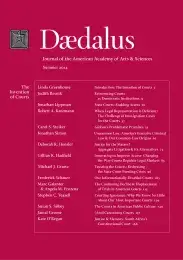Uncommon Law: America’s Excessive Criminal Law & Our Common-Law Origins
This essay explores the role that U.S. criminal courts play in shaping the uniquely punitive social order of the United States. U.S. courts have long been defined against the common law of England, from which they emerged. In this essay, I consider the English legacy and suggest that while the United States does draw heavily from common-law traditions, it has also innovated to alter them, a process that has established a criminal justice system even more punitive than that of England.
Comparative analysis of incarceration rates, an imperfect albeit ready measure of national punitiveness, shows common-law countries at the top of the distribution of wealthy liberal democracies. Within this group, the United States stands apart, incarcerating nearly three times the percentage of its population than does England, the next most punitive common-law nation.1 How the United States arrived at this state is the subject of its own considerable literature.2 Among the leading sociological factors are the unresolved legacies of slavery and racial discrimination, the weakening of the welfare state as a framework for politics and governance, comparatively high rates of violent crime (homicide in particular), and the politicized nature of criminal justice in the highly decentralized U.S. criminal justice system–especially the political influence of home-owning middle-class voters and the power of prosecutors to use their enormous discretion for political advancement. Here I want to focus on how the criminal trial courts, both in their common-law inheritance and in their long-term evolution, have contributed to the rapid emergence of severe U.S. punitiveness.
U.S. criminal courts–the most visible in the world in no small part because of popular crime television . . .
